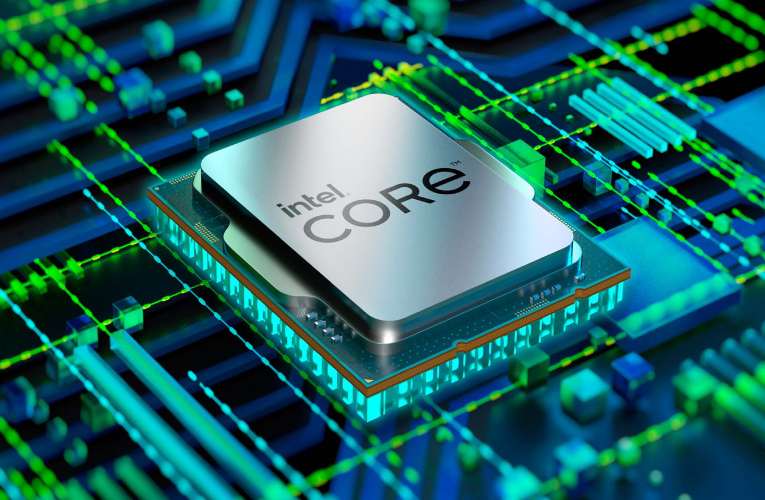
Intel is addressing the semiconductor workforce shortage by creating the industry’s first stackable, shareable and transferable one-year semiconductor technician certificate program
The U.S. semiconductor industry is facing a troubling workforce gap nationwide, highlighted in a recent report by the Semiconductor Industry Association (SIA). The report says the workforce needed in the semiconductor industry is expected to grow 33% from approximately 345,000 jobs today to approximately 460,000 jobs by 2030. However, 58% (or roughly 67,000) of projected new jobs risk being unfilled at current degree completion rates. Based on this forecast, 39% of chip factory technician jobs may remain vacant.
Closing the talent gap is critical to the success of the U.S. economy and the semiconductor industry. Intel is facing this challenge head-on by creating specific regional programs in partnership with local community colleges to meet Intel’s and the semiconductor industry’s workforce needs.
Production at Intel’s new chip factories (also known as fabs) in Ohio is expected to come online in the next several years. The fabs will deliver chips using the industry’s most advanced transistor technologies. The initial phase of the Ohio project is expected to create 3,000 Intel jobs and 7,000 construction jobs, while supporting tens of thousands of additional local long-term jobs across a broad ecosystem of suppliers and partners – from semiconductor equipment and materials suppliers to a range of service providers.
Over the years, semiconductor companies like Intel have relied on community college students to fill a large portion of technician jobs at fabs, but the emphasis on technician training waned over the years as companies invested more in science, technology, engineering and math (STEM) education and research funding for bachelor, master and Ph.D. programs. Increasing programs such as certification boot camps, apprenticeships and other training programs at community and technical colleges located near new and expanding semiconductor fabs is an effective way to help close the workforce gap for technicians, SIA found.
Historically, Intel has invested regionally in technician programs in Arizona, Oregon and New Mexico, and internationally in Ireland and Israel where its large fab manufacturing and research and development facilities are located. To support the Ohio fabs, Intel has taken key lessons from these other regions to reinvent the way technician education is developed. Intel learned that financial situations and confidence in math and science skills can be a barrier to students entering a technical two-year program.
To address this, community colleges in Ohio, led by Columbus State Community College, created the industry’s first stackable, shareable and transferable one-year semiconductor technician certificate program. The program launches in 2023-24 to help build the talent pipeline. Colleges include Columbus State Community College, Marion Technical College, Rhodes State College, North Central State College, Central Ohio Technical College, Clark State, Northwestern State, Stark State, Zane State, Owens Community College and Lorian Community College. The certificate includes three newly developed courses that are well aligned with the minimum technical skills required for an entry-level technician position outlined by Intel.
The new courses include Introduction to Manufacturing, Semiconductor 101 and Vacuum Systems. Rather than offering classes separately, the math and science content is embedded in the courses offered in the one-year certificate program, effectively removing the confidence barrier. In addition, the one-year certificate program is integrated with technical centers, community college programs and undergraduate university programs, allowing students to seamlessly transfer technician certificate credits. Furthermore, by concentrating the key skills into a one-year program, the financial burden on students is reduced. With these changes, Intel hopes the program will attract a more diverse group of students, which benefits the semiconductor industry as a whole.
Intel delivered a consolidated list of skills that would be desirable for an entry-level technician and shared it across the institutes participating in the program. The institutes evaluated existing courses and curriculum and created the one-year certificate program.
Key technical skills:
- Hand tool basics: Familiarity with the proper and safe use of hand tools commonly used in preventive and corrective maintenance at semiconductor factories, including torque wrenches, drivers, Allen keys, wrenches and digital voltmeters (DVMs).
- Mechanical, pneumatic, hydraulics and vacuum systems: Understanding how mechanical systems function, as well as reading mechanical schematics. Understanding basic types of actuation, such as pneumatic, hydraulic and electrical, as well as knowing how vacuum systems work in semiconductor manufacturing.
- Math: Ability to apply math skills to aid in troubleshooting, building/fixing and statistics in semiconductors.
- Electrical basics and electronics: Ability to safely work around electrical systems. Reading electrical schematics to trace the wiring from one component to the next for troubleshooting and rewiring bad components. Utilizing DVMs to perform a zero-volt check of a system.
- Chemicals and gases: Understanding the different types of chemicals (acids, bases, toxic and flammables) in a fab environment and how appropriate personal protective equipment, procedures and safety systems can mitigate risk.
In addition to the technician certification programs created by the Intel Semiconductor Education and Research Program, Intel is also collaborating with the National Science Foundation in two programs: Enhancing Engineering Technology and Advanced Semiconductor Manufacturing Technician Education (ETSTE) and Future of Semiconductors (FuSe) to ensure the U.S. workforce is ready for a new era in semiconductor manufacturing.

